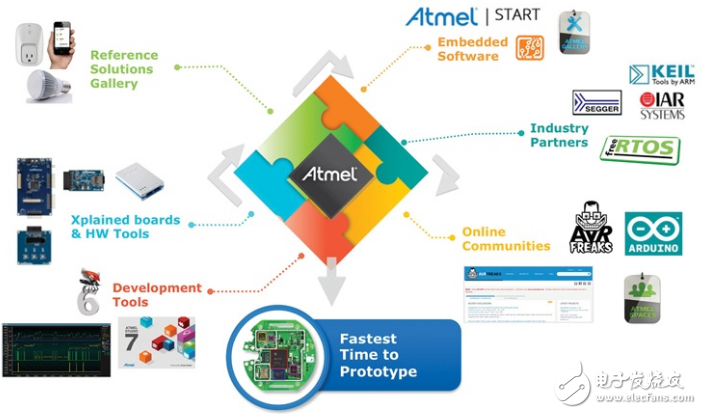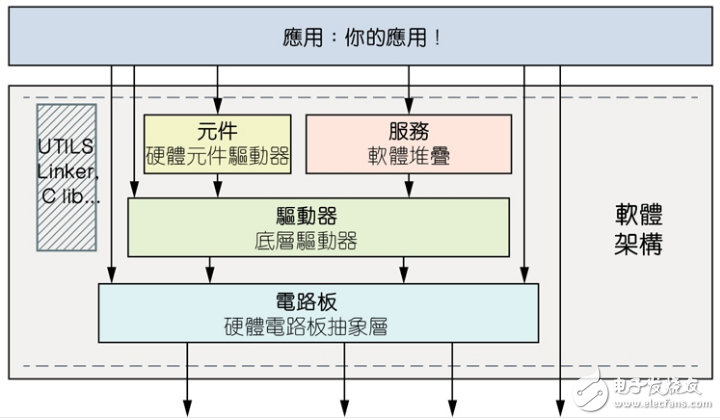Nothing is easier to start a hardware company than it is now. The Internet of Things (IoT), which many people call the future of embedded computing, is now seen as a more affordable platform for software and hardware convergence. However, at the same time, the complexity of the software makes the Internet of Things design process a classic case of "survival of the fittest".
IoT design cannot be “once and for all†because diverse sensor and connectivity solutions require new design concepts. In addition, IoT projects are generally considered to have high performance, low cost, and low power consumption, all of which are closely related to some aspect of embedded software operations.
For example, in terms of high performance and low cost, this means that the possibility of reusing the previous project is very limited, and the software engineering team is not likely to scale up accordingly. Because of the inability to expand the software team and increase the project's cost budget, IoT product developers can only hope for a new generation of toolchains to help them achieve higher software productivity.

Figure 1: A comprehensive software tool chain is essential in heterogeneous IoT designs (Source: Atmel)
Building an IoT design must be good at trade-offs. On the one hand, because there are many variable components in it, the design engineer can't afford to build a secondary system and then observe whether it works effectively. And if you design from scratch, not only increase project costs, but also impose stricter time-to-market restrictions on the heterogeneous IoT design world.
Therefore, IoT design solutions—from sensor data capture to cloud data analysis—required early in design verification before engineers can design chips for IoT products. Therefore, undoubtedly, end-to-end hardware and software platforms and connectivity solution suites are critical in the complex process of dealing with the challenges of connecting a large number of devices in a seamless manner.
This article will discuss the major software challenges in the field of IoT design and how the right toolchain choices can help meet these embedded design challenges. The article focuses on three key areas of the IoT software ecosystem and guides how to implement software operations in an efficient and cost-effective manner.
Software complexityIn embedded design projects, the allocation of "hardware-software" tasks is typically 40:60. However, for IoT design projects, the software ecosystem is more focused.
For higher performance and enhanced connectivity, graphics display and cloud computing, IoT developers are moving from 8-bit and 16-bit microcontrollers (MCUs) to 32-bit components.
This requires a new software application platform to efficiently execute communications and cloud computing protocol stacks. Tasks such as real-time sampling of sensor data, component configuration, security keys, applications, and data analysis are then performed.
In addition, there are many softwares in the IoT design that involve communication protocol stacks such as TCP/IP and security tool libraries such as SSL and TLS; these software must be written to meet specific standards. This kind of software composition has been written a long time ago, and the progress of time has become more and more perfect. Therefore, for time-critical IoT developers, if you want to rewrite and use these existing software, it is really Nothing makes sense.
In fact, the risk of developing such software from scratch is to discover problems that have occurred and have been resolved in reality.

Figure 2: Facing the complexity of IoT design, building a complete software ecosystem is essential (Source: Atmel)
Tips and tricks:
· The Integrated Development Environment (IDE) is the first line of defense in response to the software complexity of building IoT applications with more features.
· When IoT designers add services to their applications, the software components and drivers associated with them are automatically added to the IoT design. For example, if an embedded developer adds a USB component to their design, the Atmel Software Framework (ASF) automatically adds the underlying USB driver to the design.
· Further accelerate the creation of embedded software by using an online software configuration and deployment engine such as Atmel START. Atmel START is a web-based tool that allows developers to graphically select and configure software components and integrate them into resources such as hardware and middleware. This tool is completely independent of the operating system and does not require installation on the user's PC before use. In addition, the projects it produces can be the target of any embedded IDE and therefore offer unparalleled flexibility.
48V20Ah Lithium Ion Battery,48V 20Ah Lithium Iron Electric Bicycle Battery,48V20Ah Electrict Scooter Battery,Lifepo4 Lithium Battery 48V20A
Jiangsu Zhitai New Energy Technology Co.,Ltd , https://www.zttall.com